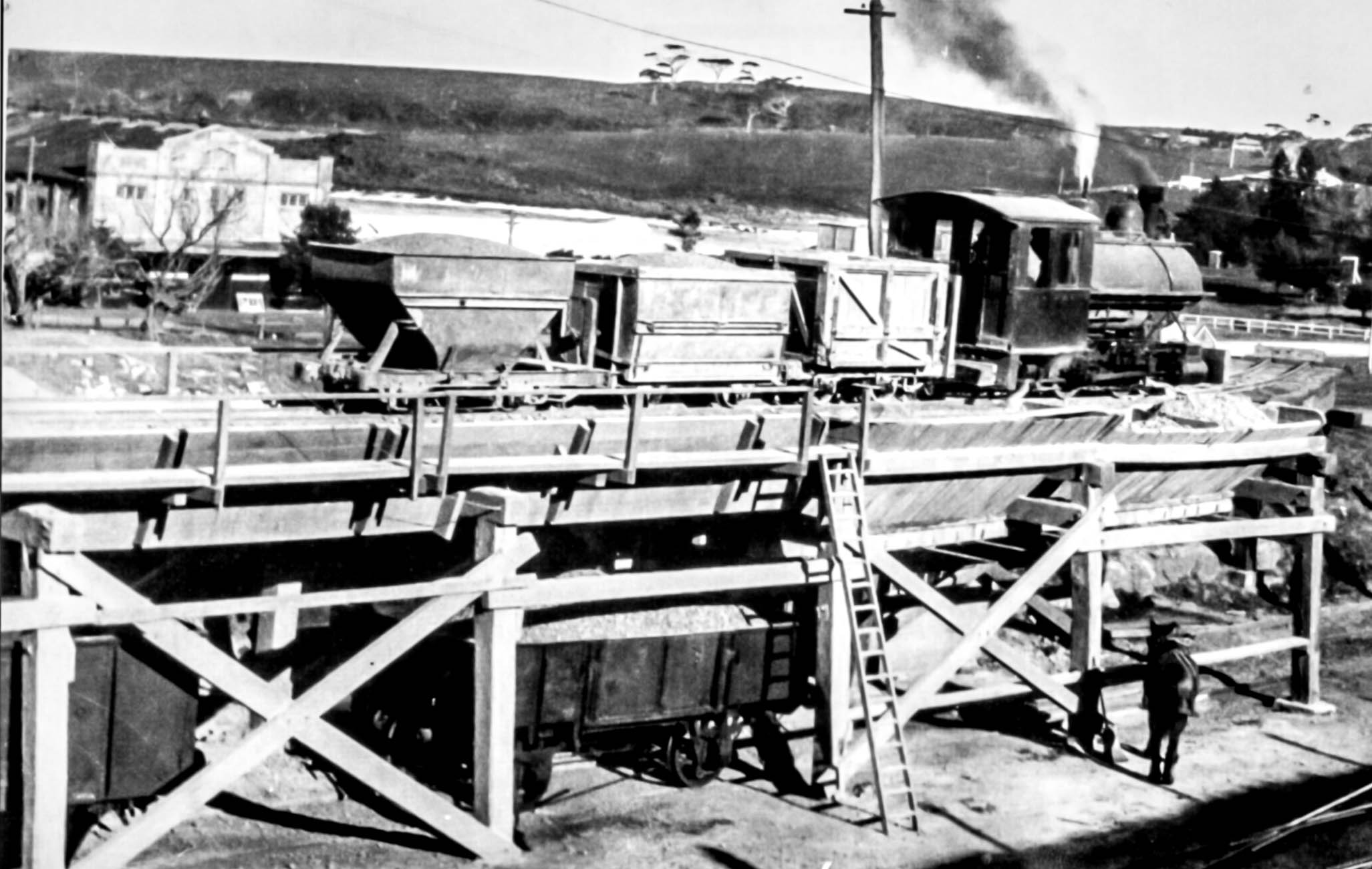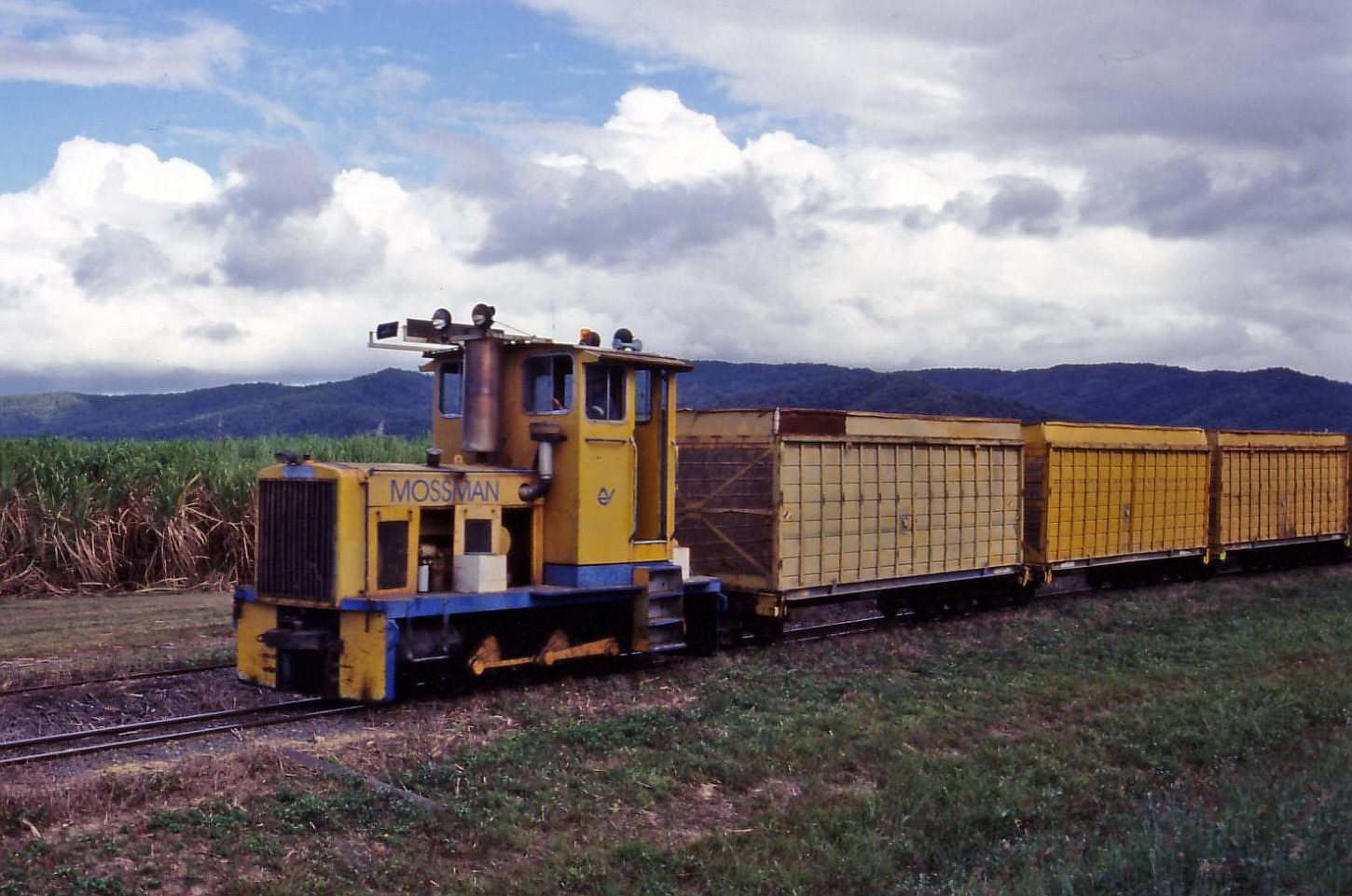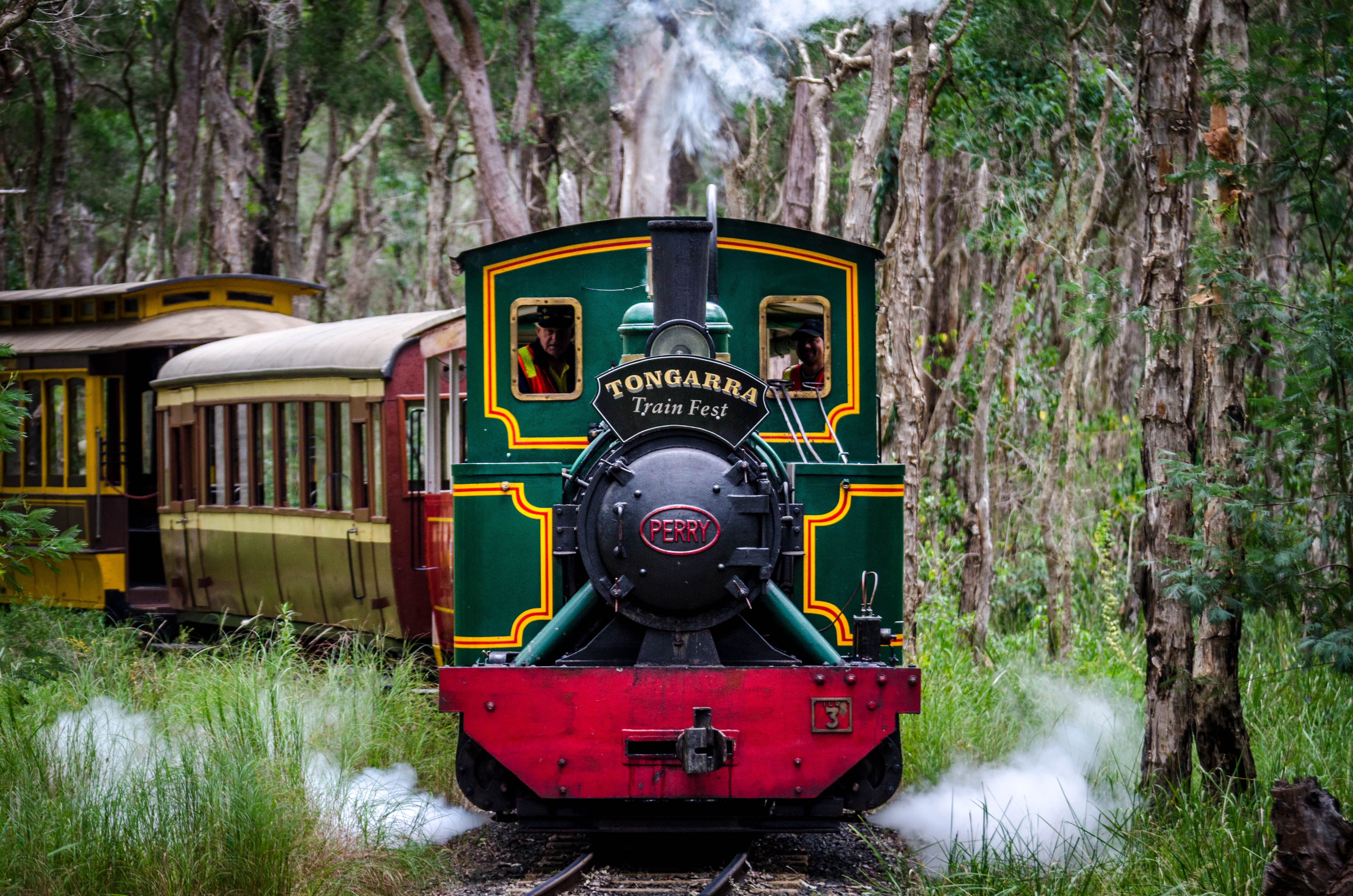|
Illawarra Light Railway Museum
The Illawarra Light Railway Museum operates a mainline narrow gauge light railway, a miniature gauge railway, and a museum located near Albion Park Rail near Wollongong, south of Sydney History The Illawarra Light Railway Museum Society Ltd. was started in 1972 with railway operations commencing in 1974 dedicated to preserving Light Railway history & Illawarra industrial history. In 2007 the society obtained federal funding for the construction of the Ken McCarthy Museum Building, which was officially opened in December 2007. Operations The Museum is opened on *Work Days being Tuesdays, Thursdays. *Running Days every second Sunday and Forth Saturday of each month. The museum site consist of the following features: *Yallah Station Building *Otford Signal Box *Fettlers Shed *Souvenir Shop & Kiosk *Workshop and Locomotive & Carriage Storage Shed *Ken McCarthy Museum Building *Arthur Moore Stationary Engine Display Exhibits Apart from the wooden trams, the horse-drawn wa ... [...More Info...] [...Related Items...] OR: [Wikipedia] [Google] [Baidu] |
Albion Park Rail, New South Wales
Albion Park Rail is a suburb of Shellharbour, Australia situated in the Macquarie Valley (Shellharbour). The South Coast railway line was opened to the railway station and Bombo in 1887. At the time the nearest town was Albion Park, several kilometres away. Over time, houses were built around the railway station, and Albion Park Rail developed into a town in its own right, and with its own name. Albion Park Rail has a community area set up with a community centre, playing fields and a recently built skatepark. It only has one school but it accommodates many students from Pre-School to Year 6. Albion Park Rail is located along the shores of Lake Illawarra, near Koona Bay. It is a fifteen-minute drive on the freeway to Wollongong. Albion Park Rail is the site of the Illawarra Regional Airport which is the location of the Historical Aircraft Restoration Society. Heritage listings Albion Park Rail has a number of heritage-listed sites, including: * Princes Highway: Albion ... [...More Info...] [...Related Items...] OR: [Wikipedia] [Google] [Baidu] |
NSW Kiama
{{NewSouthWales-rail-transport-stub ...
NSW Kiama was a steam locomotive seeing service in New South Wales. History Davenport 1596 was ordered for construction operations as PWD No. 65 on Cordeaux Dam light railway between the Nepean Gorge near Douglas Park and the Dam along Mount Keira Road between 1917 and 1926. The Locomotive was purchased by Quarries Ltd. during 1936 and transferred to Kiama Blue Metal tramway. Demise and Preservation The Kiama tramway closed in March 1941. The locomotive was utilised by several heritage organisations and finally preserved by Illawarra Light Railway Museum in 1977. References Further reading * 2 ft gauge locomotives 0-4-0 locomotives Kiama Kiama () is a coastal town 120 kilometres south of Sydney in the Illawarra. One of the main tourist attractions is the Kiama Blowhole. Kiama features several popular surfing beaches and caravan parks, and numerous alfresco cafes and restaurants ... [...More Info...] [...Related Items...] OR: [Wikipedia] [Google] [Baidu] |
Railway Museums In New South Wales
Rail transport (also known as train transport) is a means of transport that transfers passengers and goods on wheeled vehicles running on rails, which are incorporated in tracks. In contrast to road transport, where the vehicles run on a prepared flat surface, rail vehicles (rolling stock) are directionally guided by the tracks on which they run. Tracks usually consist of steel rails, installed on sleepers (ties) set in ballast, on which the rolling stock, usually fitted with metal wheels, moves. Other variations are also possible, such as "slab track", in which the rails are fastened to a concrete foundation resting on a prepared subsurface. Rolling stock in a rail transport system generally encounters lower frictional resistance than rubber-tyred road vehicles, so passenger and freight cars (carriages and wagons) can be coupled into longer trains. The operation is carried out by a railway company, providing transport between train stations or freight customer facil ... [...More Info...] [...Related Items...] OR: [Wikipedia] [Google] [Baidu] |
2 Ft Gauge Railways In Australia
A list of narrow-gauge railways in Australia. Installations See also * 2 ft and 600 mm gauge railways *Heritage railway A heritage railway or heritage railroad (US usage) is a railway operated as living history to re-create or preserve railway scenes of the past. Heritage railways are often old railway lines preserved in a state depicting a period (or periods) i ... * Narrow-gauge railways in Australia * Railways on the West Coast of Tasmania References External linksQueensland sugar cane railways today {{Navbox track gauge Narrow gauge railways in Australia ... [...More Info...] [...Related Items...] OR: [Wikipedia] [Google] [Baidu] |
List Of Heritage Railways In Australia
This is a list of heritage railways in Australia, some of which can also be considered tourist railways. For convenience, heritage tramways have also been included. Most are members of Association of Tourist & Heritage Rail Australia (ATHRA). In addition to active operations, abandoned and putative operations are also included, but static museum sites and rolling stock operators without a 'dedicated' line do not fall within Wikipedia's definition of heritage railways. Miniature railways with gauges of less than 380mm (15 in) are excluded. Lines named in red are lacking a detailed Wikipedia entry. The world's second preserved railway, and the first outside the United Kingdom, was Australia's Puffing Billy Railway. This railway operates on of track, with much of its original rolling stock built as early as 1898. New South Wales gauge unless otherwise stated. See also Transport Heritage NSW * Byron Bay Train * Campbelltown Narrow Gauge Railway— gauge * Cooma Monaro ... [...More Info...] [...Related Items...] OR: [Wikipedia] [Google] [Baidu] |
Adelaide
Adelaide ( ) is the capital city of South Australia, the state's largest city and the fifth-most populous city in Australia. "Adelaide" may refer to either Greater Adelaide (including the Adelaide Hills) or the Adelaide city centre. The demonym ''Adelaidean'' is used to denote the city and the residents of Adelaide. The Traditional Owners of the Adelaide region are the Kaurna people. The area of the city centre and surrounding parklands is called ' in the Kaurna language. Adelaide is situated on the Adelaide Plains north of the Fleurieu Peninsula, between the Gulf St Vincent in the west and the Mount Lofty Ranges in the east. Its metropolitan area extends from the coast to the foothills of the Mount Lofty Ranges, and stretches from Gawler in the north to Sellicks Beach in the south. Named in honour of Queen Adelaide, the city was founded in 1836 as the planned capital for the only freely-settled British province in Australia. Colonel William Light, one of Adelaide's ... [...More Info...] [...Related Items...] OR: [Wikipedia] [Google] [Baidu] |
Dry Creek Explosives Depot
The Dry Creek explosives depot was a secure storage facility at Dry Creek, near Port Adelaide, from 1904 to 1995, serving the construction, mining and quarrying industries of South Australia and the mines of Broken Hill in New South Wales. originally published in Retrieved 10 March 2015. Construction The ten magazines of the Dry Creek explosives depot were built by the South Australian Government's Department of Chemistry in 1906 at a cost of £6,000 or £7,000 at Broad Creek, a tidal distributary channel on the eastern side of the Barker Inlet of the Port River Estuary, which runs in the direction of the now suburb of Dry Creek. The Broad Creek site, located on the landward side of intertidal mangroves and supratidal saltmarshes, was chosen as a more isolated location from Port Adelaide, replacing an earlier explosives depot called North Arm Powder Magazine at Magazine Creek at Gillman, south of the North Arm of the Port River. Horse tram A narrow gauge tramw ... [...More Info...] [...Related Items...] OR: [Wikipedia] [Google] [Baidu] |
Horse-drawn Explosives Carrying Wagon In The Dry Creek Explosive Magazine In South Australia
A horse-drawn vehicle is a mechanized piece of equipment pulled by one horse or by a team of horses. These vehicles typically had two or four wheels and were used to carry passengers and/or a load. They were once common worldwide, but they have mostly been replaced by automobiles and other forms of self-propelled transport. General Horses were domesticated circa 3500 BCE. Prior to that oxen were used. Historically a wide variety of arrangements of horses and vehicles have been used, from chariot racing, which involved a small vehicle and four horses abreast, to horsecars or trollies, which used two horses to pull a car that was used in cities before electric trams were developed. A two-wheeled horse-drawn vehicle is a cart (see various types below, both for carrying people and for goods). Four-wheeled vehicles have many names – one for heavy loads is most commonly called a wagon. Very light carts and wagons can also be pulled by donkeys (much smaller than horses), pony, po ... [...More Info...] [...Related Items...] OR: [Wikipedia] [Google] [Baidu] |
Hampton, Queensland
Hampton is a rural town and locality in the Toowoomba Region, Queensland, Australia. In the , the locality of Hampton had a population of 356 people. Geography Hampton is on the Darling Downs, west of the state capital, Brisbane. Situated at the top of an escarpment on the Great Dividing Range, Hampton is one of the small town located along the New England Highway between Toowoomba, (29 kilometres away) and Crows Nest (12 kilometres). There are three local dams that supply water to the surrounding area, all within a short distance of Hampton. These are Cooby Dam, Perseverance Dam and Cressbrook Dam. Recreational activities are available on some of the dams. Climate Hampton has moderate summer temperatures with high temperatures around . The summer low temperature is around . Hampton also has mild winters with temperature highs close to , and low temperatures around . The local flora and fauna are abundant to include many species of birds and mammals. Eucalypt and pi ... [...More Info...] [...Related Items...] OR: [Wikipedia] [Google] [Baidu] |
Lima Locomotive Works
Lima Locomotive Works was an American firm that manufactured railroad locomotives from the 1870s through the 1950s. The company took the most distinctive part of its name from its main shop's location in Lima, Ohio. The shops were located between the Erie Railroad main line, the Baltimore & Ohio's Cincinnati-Toledo main line and the Nickel Plate Road main line and shops. The company is best known for producing the Shay geared logging-steam locomotive, developed by Ephraim Shay, and for William E. Woodard's "Super Power" advanced steam locomotive concept – exemplified by the prototype 2-8-4 Berkshire, Lima demonstrator A-1. In World War II the Lima plant produced the M4A1 version of the M4 Sherman tank. History In 1878 James Alley contracted the Lima Machine Works to build a steam locomotive that Ephraim Shay had designed. In April 1880, Lima rebuilt Ephraim Shay's original design, using vertically side-mounted pistons mounted on the right, connected to a drive ... [...More Info...] [...Related Items...] OR: [Wikipedia] [Google] [Baidu] |
Kiama, New South Wales
Kiama () is a coastal town 120 kilometres south of Sydney in the Illawarra. One of the main tourist attractions is the Kiama Blowhole. Kiama features several popular surfing beaches and caravan parks, and numerous alfresco cafes and restaurants. Its proximity to the south of Sydney makes it an attractive destination for many day-trippers and weekenders. History Kiama was the site of two strong volcanic flows, called the Gerringong Volcanics, which came out of Saddleback Mountain, now a collapsed volcanic vent. The Kiama Blowhole is part of an erosion process on the more recent rock, formed into columnar basalt, or latite. Before the cedar-getters (comprising ex-convicts, convicts and runaways, some with cedar licences and many without) arrived in the area around 1810, the local Indigenous Australians, Wodi Wodi of the language group Dharawal, had been using the land for thousands of years, moving every six weeks or so in family groups. This is supported by a midden of she ... [...More Info...] [...Related Items...] OR: [Wikipedia] [Google] [Baidu] |
John Fowler & Co
John Fowler & Co Engineers of Leathley Road, Hunslet, Leeds, West Yorkshire, England produced traction engines and ploughing implements and equipment, as well as railway equipment. Fowler also produced the Track Marshall tractor which was a tracked version of the Field Marshall. British Railways Engineering Department locomotives ED1 to ED7 were built by Fowler History John Fowler was an agricultural engineer and inventor who was born in Wiltshire in 1826. He worked on the mechanisation of agriculture and was based in Leeds. He is credited with the invention of steam-driven ploughing engines. He died 4 December 1864, following a hunting accident. After his death, John Fowler & Co., was then continued by Robert Fowler and Robert Eddison. In 1886 the limited company of John Fowler & Co., (Leeds) Ltd., was formed. It merged with Marshall, Sons & Co., Ltd., of Gainsborough in 1947 to form Marshall-Fowler Ltd. Although not well known for them, Fowler also built a sm ... [...More Info...] [...Related Items...] OR: [Wikipedia] [Google] [Baidu] |








